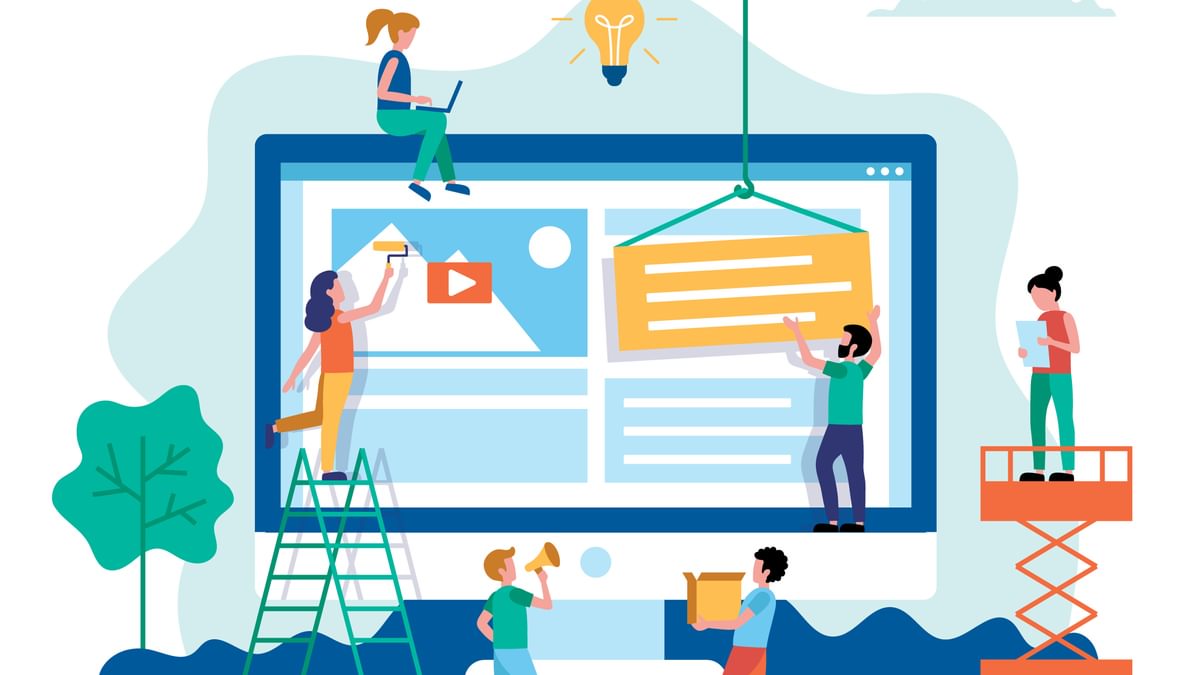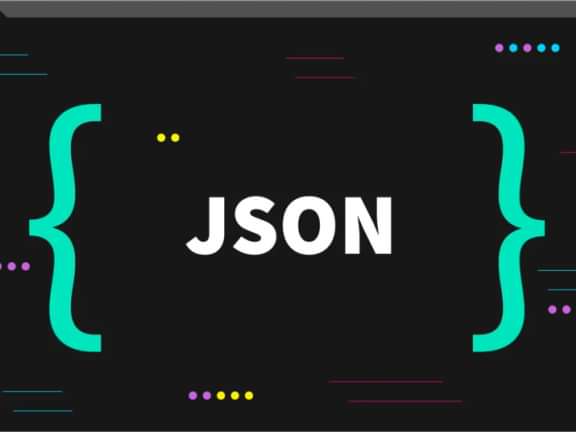Website Costs in 2024: Understanding the Investment for a Successful Online Presence
Discover the secrets to website success in 2024!
A Website is an Investment
In today's digital age, a website is a fundamental tool for businesses, organizations, and individuals to establish an online presence. However, determining the cost of a website can be challenging, as it depends on various factors such as design complexity, functionality requirements, and ongoing maintenance. In this blog post, we will explore the factors that influence website costs in 2023, providing you with valuable insights to help you understand the investment required for a successful website.
Purpose and Goals of Your Website
Defining the purpose and goals of your website is the foundation of its development and success. Here are some key aspects to consider:
Business Objectives: Identify the primary objective of your website. Is it to generate sales, increase brand awareness, provide information, or offer a platform for interaction? Clearly defining your business objectives will help align the website's design, functionality, and content to achieve those goals.
Target Audience: Understand your target audience and their needs. Who are you trying to reach, and what information or services are they seeking? Tailoring your website to meet their expectations is crucial for engagement and conversion.
Branding and Messaging: Consider how your website will reflect your brand identity and communicate your message effectively. The visual design, tone of voice, and overall user experience should align with your brand values and resonate with your target audience.
Conversion Goals: Determine the desired actions you want users to take on your website. This could include making a purchase, filling out a contact form, subscribing to a newsletter, or downloading resources. Clear conversion goals will guide the design and functionality decisions to optimize user flow and increase conversions.
Content Strategy: Define the type of content you plan to showcase on your website. Will it include blog articles, product descriptions, case studies, or multimedia content? Establishing a content strategy will help with planning resources, budgeting for content creation, and organizing information effectively.
Scalability and Future Growth: Consider the scalability of your website. Will you need to expand its functionality or add new features in the future? Building a website with future growth in mind can save you from costly redesigns or redevelopment down the line.
Competitor Analysis: Research and analyze your competitors' websites. Understand what works well for them and identify areas where you can differentiate yourself. This analysis can help you set realistic goals and expectations for your website's features and functionality.
By carefully considering the purpose and goals of your website, you can collaborate with designers and developers more effectively, ensuring that the final product aligns with your vision and achieves the desired outcomes. This understanding will also inform your budgeting decisions and allow for a more accurate estimation of the overall cost of your website project.

Website Design and Development
Custom Design vs. Pre-built Templates: The choice between custom design and pre-built templates has cost implications. Custom design offers a unique, tailored look that aligns precisely with your brand but can be more expensive due to the time and expertise required. Pre-built templates, on the other hand, are more cost-effective but may require some customization to suit your specific needs.
Design Complexity: The complexity of your website design affects the cost. Websites with intricate layouts, unique animations, or custom illustrations will generally have a higher price tag compared to simpler designs. Consider the level of visual sophistication required and communicate your design preferences to the designers to get accurate cost estimates.
Number of Pages: The number of pages on your website influences the cost. Each page requires design elements, content formatting, and development work. Larger websites with extensive content and multiple pages will require more time and resources, resulting in higher costs.
Responsive Design: In 2023, mobile responsiveness is crucial. Ensuring your website looks and functions well on various devices requires additional design and development effort. Responsive design impacts the overall cost due to the extra work involved in creating flexible layouts and optimizing user experiences across different screen sizes.
Content Management System (CMS): The choice of CMS affects both design and development costs. Some CMS platforms, like WordPress and Craft CMS, offer more flexibility and customization options but may require more development time and expertise, thus increasing the overall cost. Assess your content management needs and consult with professionals to determine the most suitable CMS for your budget.
Integration of Functionality: The inclusion of specific features and functionalities impacts the cost. E-commerce capabilities, payment gateways, user authentication systems, advanced search functionality, and third-party integrations (such as CRM or email marketing tools) require additional development work, resulting in increased costs. Consider the essential features for your website and prioritize based on your budget and goals.
Backend Development: Backend development involves creating the functionality that powers your website, such as databases, server configurations, and content management systems. Complex websites with advanced functionality will require more backend development work, contributing to higher costs.
Testing and Quality Assurance: Rigorous testing and quality assurance are essential to ensure a seamless user experience. This process involves identifying and fixing bugs, optimizing performance, and ensuring cross-browser compatibility. While it may add to the overall cost, it is crucial for delivering a reliable and user-friendly website.
It's important to communicate your specific design and functionality requirements to the web development team or agency. They can provide you with a detailed breakdown of costs based on your project specifications. Remember, investing in professional design and development ensures a high-quality website that aligns with your goals and delivers an excellent user experience.
Functionality and Features
The functionality and features you want to incorporate into your website play a significant role in determining its cost. Consider the following aspects:
When planning your website's functionality, identify the specific features required to achieve your goals. For example, if you're running an e-commerce store, you'll need product listings, a shopping cart, and a secure payment gateway. Each feature adds development complexity and increases the overall cost.
The complexity of implementing custom functionality versus utilizing existing plugins or extensions should be considered. Custom development allows for tailored solutions but may require more time and resources, leading to higher costs. On the other hand, using existing plugins or extensions can be more cost-effective, but may have limitations in terms of customization and scalability.
Content management systems (CMS) offer various functionality options. Some CMS platforms have built-in features that provide e-commerce, blogging, or membership capabilities, reducing the need for extensive custom development. However, advanced or highly customized functionality may require additional development work and increase costs.
Integrations with third-party services, such as customer relationship management (CRM) tools, email marketing services, or social media platforms, can enhance your website's capabilities. However, integrating these services often requires development and configuration, adding to the overall cost.
Consider the scalability of your website and its potential to grow in the future. If you anticipate adding new functionality or expanding your website's capabilities, it's important to discuss these requirements with your development team. They can plan and build a scalable foundation to accommodate future feature additions, minimizing the need for costly redesigns or redevelopments later on.
It's essential to prioritize functionality based on your budget and immediate goals. Identifying the core features that align with your website's purpose will help you allocate resources effectively. As your website grows and generates revenue, you can invest in additional functionality and features over time.
Remember, it's crucial to communicate your specific functionality requirements to the development team or agency. They can provide you with a detailed estimate based on your desired features, offering insights into the costs and technical considerations involved.
Ongoing Maintenance and Updates
Maintaining and updating your website is crucial for its long-term success and performance. Consider the following aspects related to ongoing maintenance and updates:
Regular security updates are vital to protect your website against vulnerabilities and potential threats. This includes applying software patches, monitoring for security breaches, and implementing necessary security measures. Investing in ongoing security updates helps safeguard your website and data, preventing potential damages that could incur significant costs in the future.
Over time, websites may encounter bugs or technical issues that affect functionality or user experience. Ongoing maintenance ensures prompt identification and resolution of these issues. It involves regular monitoring, bug fixes, and troubleshooting to keep your website running smoothly.
Keeping your website content fresh and up to date is vital for engaging visitors and maintaining search engine visibility. Ongoing maintenance includes adding new content, updating existing information, and removing outdated content. Consider the frequency and scope of content updates to estimate the ongoing maintenance costs.
Website performance is essential for user experience and search engine rankings. Ongoing maintenance involves optimizing your website's speed, responsiveness, and overall performance. This can include tasks such as image optimization, cache management, database optimization, and code optimizations. Regular performance optimization ensures your website loads quickly, providing a seamless experience for visitors.
Content management systems (CMS) and plugins used on your website regularly release updates to improve functionality, security, and compatibility. Ongoing maintenance involves keeping your CMS and plugins up to date. This requires testing and implementing updates to ensure compatibility and prevent any conflicts that could disrupt your website's functionality.
Regular backups are crucial to protect your website's data in case of unforeseen events, such as hardware failures, hacking attempts, or human error. Ongoing maintenance involves implementing reliable backup systems and ensuring backups are performed regularly. Additionally, having a disaster recovery plan in place helps minimize downtime and potential losses in case of emergencies.
Monitoring your website's performance and user behavior is essential for making data-driven decisions. Ongoing maintenance includes setting up analytics tools, tracking website metrics, and analyzing user behavior to identify areas for improvement and optimization.
It's important to allocate a budget for ongoing maintenance and updates to ensure the long-term health and performance of your website. Consider partnering with a professional web development agency or hiring a dedicated website maintenance team to handle these ongoing tasks efficiently. They can provide tailored maintenance plans and pricing options based on the specific needs of your website.
Additional Factors Influencing Costs
In addition to website design and development, there are several other factors that can influence the overall cost of your website. Consider the following:
Search Engine Optimization (SEO) is an essential aspect of website development. Implementing SEO strategies to improve your website's visibility in search engine results can impact costs. This includes keyword research, on-page optimization, content optimization, and link building efforts. Depending on the level of SEO required, costs can vary. On average, a comprehensive SEO campaign can range from $500 to $5,000 per month, depending on the scope and competitiveness of the industry.
If you require your website to be available in multiple languages, it can increase development and content creation costs. The complexity of implementing multilingual support depends on the number of languages, content translation, and maintaining consistent user experiences across different language versions.
Building an accessible website that meets the needs of users with disabilities requires additional design and development effort. It involves adhering to web accessibility guidelines, implementing features like screen reader compatibility, keyboard navigation, and providing alternative text for images. Accessibility enhancements may add to the overall cost, but they are essential for inclusivity and compliance.
Custom integrations and API development may be necessary if your website requires integration with external systems or APIs, such as payment gateways, CRM systems, or inventory management systems. The complexity and requirements of the integration can impact costs.
Developing an e-commerce website involves additional considerations such as product listings, shopping carts, payment gateways, and order management systems. The complexity of the e-commerce functionality required can significantly impact costs. On average, e-commerce websites can range from $5,000 to $50,000, depending on the number of products, desired features, and customization requirements.
High-quality content is crucial for engaging visitors and driving conversions. The cost of content creation, including copywriting, graphic design, and multimedia production, will depend on the scope and complexity of the content. Copywriting services can range from $50 to $500 per page, depending on the expertise and level of research required.
After launching your website, you may need to invest in marketing and promotional activities to drive traffic and achieve your goals. This can include strategies like search engine marketing (SEM), social media advertising, content marketing, or influencer collaborations. The budget for marketing and promotion can vary greatly depending on the scale and scope of your campaigns.
Conclusion
Building a website in 2023 requires careful consideration of various factors, each contributing to the overall cost. By understanding the elements discussed in this blog post and aligning them with your goals and budget, you can make informed decisions when investing in your online presence. Remember that a well-designed and functional website is a valuable asset that can help you reach your target audience, drive business growth, and stand out in today's competitive digital landscape.
At BrillianceNW, we specialize in crafting exceptional websites that align with your goals and budget. Whether you need assistance with website design, development, SEO, or ongoing maintenance, our experienced team is here to help. Reach out to us today to discuss your website project and let us guide you in creating a successful online presence. Together, we can build a website that showcases your brand and drives results.
Continue reading.
The Element API plugin is a very powerful tool that you can use for quickly exposing your data structures to an external source.
Read moreA brief introduction to consensus mechanisms and why proof of stake is the right move for Ethereum.
Read moreLet's chat about your project
Portland, OR 97215



